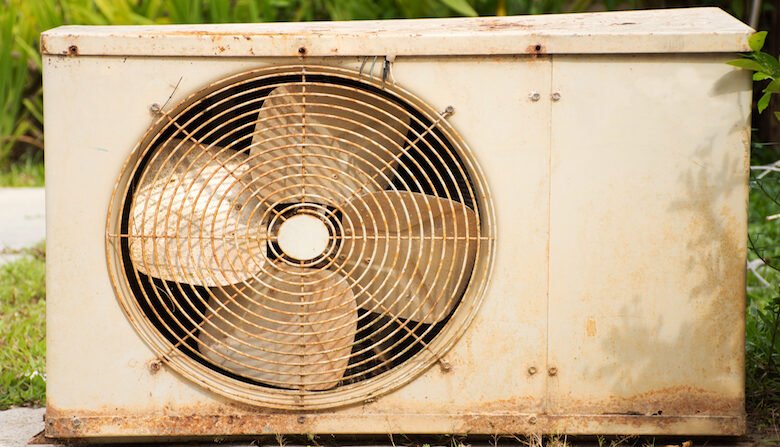Breaking AC: Understanding, Troubleshooting, and Maintaining Your Air Conditioner

Introduction: The Reality of a Breaking AC
There’s nothing more frustrating during the summer than a breaking AC. When your air conditioner fails, it can turn even a short heatwave into an unbearable experience. Understanding why AC units break down, how to troubleshoot them, and the preventive measures you can take is essential for homeowners and renters alike.
Air conditioners are complex machines made up of several components, including compressors, condensers, evaporator coils, and refrigerants. A failure in any one of these parts can lead to a full or partial breakdown. While some issues are minor and easily fixed, others may require professional intervention. Knowing the difference can save time, money, and unnecessary stress.
In this article, we’ll explore the common reasons for AC breakdowns, tips for troubleshooting, steps for maintenance, and guidance for knowing when to call a professional. By understanding the inner workings of your AC, you can stay cool, comfortable, and prepared.
Common Causes of a Breaking AC

Air conditioners can break down for a variety of reasons, often due to wear and tear or neglect. One of the most common causes is dirty filters. Over time, dust, pollen, and debris accumulate, restricting airflow and causing the system to work harder than necessary. This can lead to overheating and, eventually, breakdowns. Regularly replacing or cleaning filters can prevent a large percentage of common AC issues.
Another frequent cause is refrigerant leaks. The refrigerant is responsible for cooling the air, and if it leaks, your AC won’t function efficiently. Low refrigerant levels often result in warm air blowing from vents, ice formation on coils, or frequent cycling of the unit. Identifying a refrigerant leak usually requires a professional, but recognizing the signs early can prevent more severe damage.
Electrical issues are also a significant contributor to AC breakdowns. Faulty wiring, tripped breakers, or worn-out capacitors can all cause the system to stop working. These problems not only disrupt cooling but can also pose a safety risk. Regular inspections and timely repairs are crucial to ensure the electrical components of your AC are in good condition.
Signs Your AC Is Breaking
Recognizing the early signs of a breaking AC can help prevent a full breakdown and save you from expensive repairs. One obvious indicator is inconsistent cooling. If some rooms are cooler than others or the unit struggles to reach the set temperature, it could signal a failing compressor or blocked ductwork.
Strange noises are another warning sign. Grinding, squealing, or rattling sounds can indicate issues with the motor, fan, or other mechanical components. Ignoring these noises often leads to more severe problems and, in some cases, complete AC failure.
Additionally, unusual odors coming from the vents can signal mold growth, refrigerant leaks, or electrical problems. Any time you notice a strange smell, it’s wise to investigate further. Addressing these signs early can extend the lifespan of your AC and ensure your home remains safe and comfortable.
DIY Troubleshooting Tips for a Breaking AC
While some AC problems require professional help, many minor issues can be addressed with simple troubleshooting techniques. Checking the thermostat is a great first step. Ensure it’s set to the correct temperature and mode (cooling vs. fan). Sometimes, a simple recalibration or battery replacement can restore proper function.
Inspecting and cleaning air filters is another easy DIY task. Dirty filters restrict airflow and make the system work harder, often causing it to overheat. Replacing or cleaning filters monthly during heavy usage can prevent many breakdowns.
Another step is to check the circuit breaker. AC units draw significant power, and occasional surges can trip the breaker, shutting down the system. Resetting the breaker may immediately restore operation, but repeated trips indicate an underlying electrical issue that requires professional attention.
Professional Repairs vs DIY Solutions
While DIY troubleshooting can solve minor problems, professional repair services are essential for complex issues. Problems like refrigerant leaks, compressor failure, or damaged coils require specialized knowledge and tools. Attempting these repairs without expertise can worsen the situation or void warranties.
A licensed HVAC technician can perform a comprehensive inspection, identify underlying issues, and recommend long-term solutions. Regular professional maintenance, such as checking refrigerant levels, lubricating moving parts, and cleaning coils, can prevent most breakdowns.
Understanding when to call a professional is key. If your AC is making unusual noises, failing to cool despite proper maintenance, or frequently tripping breakers, it’s time to schedule a service appointment. Timely intervention can prevent a complete system failure and save you from costly replacements.
Preventive Measures to Avoid AC Breakdowns
Preventing a breaking AC is always better than repairing one. Regular maintenance is the cornerstone of prevention. This includes changing filters monthly, cleaning vents, and keeping the outdoor condenser free of debris.
Scheduling annual professional inspections is another critical step. Technicians can spot potential problems before they become major issues, check refrigerant levels, inspect electrical components, and clean internal parts. This proactive approach significantly reduces the risk of unexpected breakdowns.
Energy efficiency also plays a role in preventing AC issues. Using programmable thermostats, sealing ducts, and ensuring proper insulation reduce strain on your AC system. By minimizing overwork, you extend the lifespan of your unit and maintain consistent cooling throughout your home.
Cost Considerations: Repair vs Replacement
When dealing with a breaking AC, understanding the financial implications is important. Minor repairs like filter replacement or thermostat recalibration are inexpensive, often under $100. However, major issues such as compressor failure or refrigerant leaks can cost several hundred dollars or more.
In some cases, frequent repairs may indicate that the unit is nearing the end of its lifespan. Most air conditioners last between 10-15 years, depending on usage and maintenance. If your system is older and requires repeated repairs, investing in a new, energy-efficient AC may be more cost-effective in the long run.
Balancing repair costs against replacement expenses requires careful consideration. Consulting with a professional technician can help you make an informed decision, ensuring your home remains comfortable without unnecessary financial strain.
Conclusion: Staying Ahead of AC Breakdowns
A breaking AC is never convenient, but understanding the causes, signs, and solutions can make the situation manageable. From recognizing early warning signs and performing simple troubleshooting to scheduling professional maintenance, proactive measures are key to ensuring your air conditioner functions smoothly.
Preventive care, combined with timely professional intervention, not only extends the life of your AC but also keeps your home comfortable and safe. Whether you’re dealing with a minor glitch or a major breakdown, staying informed and prepared makes all the difference.
By taking AC maintenance seriously and addressing issues promptly, homeowners can avoid the frustration of a malfunctioning system and enjoy reliable cooling year after year. A well-maintained air conditioner isn’t just a luxury—it’s a necessity for comfort and peace of mind.



